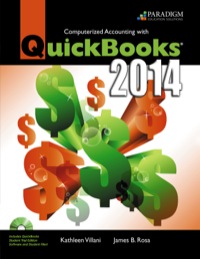Question
The following are examples of independent internal controls that are frequently seen during the acquisition and payment cycle. Each control is to be considered independently.
The following are examples of independent internal controls that are frequently seen during the acquisition and payment cycle. Each control is to be considered independently.
1. Before a check is prepared by the accounts payable department to pay for acquisitions, the purchase order and receiving report associated with the acquisition are linked to the vendor's invoice that is being paid. When a clerk examines an invoice, she compares the quantity on the invoice with the quantity on the receiving report and purchase order, compares the price on the invoice with the price on the purchase order, re-computes the extensions, re-adds the total, and checks the account number on the invoice to see if it is correctly classified. By initialing the invoice, he certifies that he has completed the steps described.
2. At the conclusion of each month, an accounting clerk accounts for all prenumbered receiving reports (documents confirming the receipt of products) issued during the month and links each one to the corresponding vendor's invoice and acquisitions journal entry in the acquisitions database. There are no tests carried out by the clerk to determine the quantity or description of the product received.
3. It is not permitted for the cash disbursements clerk to handle any cash. The bank account is reconciled by someone other than the clerk, despite the fact that the clerk has the necessary expertise and time to do it.
4. Before the controller signs a check, she analyses the supporting documentation that is included with the check. She then initials the invoices of each vendor to express her approval of the invoices.
5. The controller's secretary then writes the check number and date the check was issued on each of the supporting documents to prevent them from being reused after the checks have been signed by the controller.
Required: i. For each of the internal controls, state the transaction-related audit objective(s) the control is meant to fulfill. (10 marks)
ii. For each control, list one test of control the auditor could perform to test the effectiveness of the control. (10 marks)
iii. Distinguish between a test of control and a substantive test of transactions. Give two examples of each.
Step by Step Solution
There are 3 Steps involved in it
Step: 1

Get Instant Access to Expert-Tailored Solutions
See step-by-step solutions with expert insights and AI powered tools for academic success
Step: 2

Step: 3

Ace Your Homework with AI
Get the answers you need in no time with our AI-driven, step-by-step assistance
Get Started


